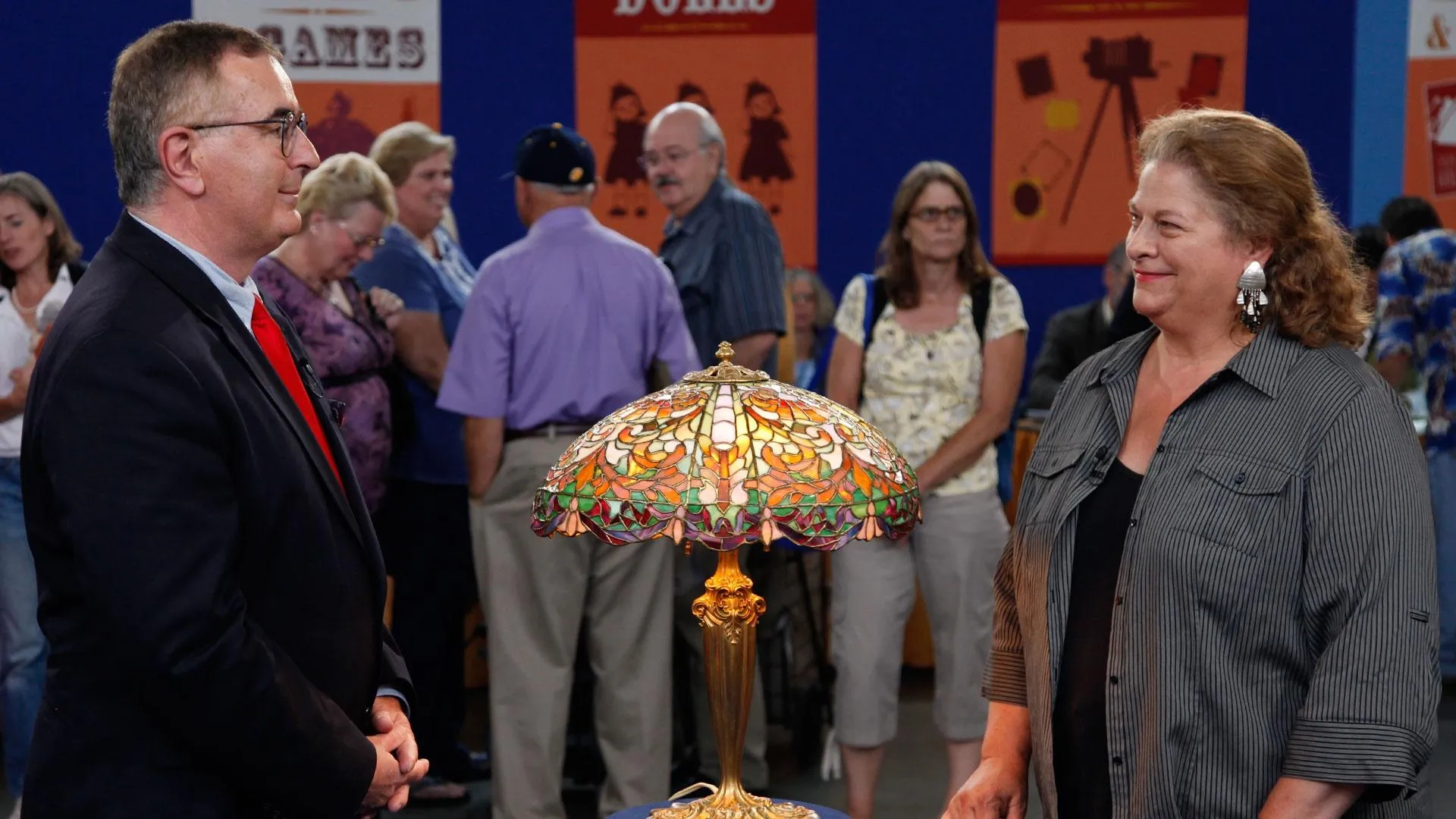GUEST: I got it from the estate of my father-in-law. I came to the family in '66, so it was existed in '66, and I assume it's been there a long time in his home. Now it's in my home, and I’ve loved it all these years.
APPRAISER: What would you like to know about the piece?
GUEST: Well, everything, because I don't know anything.
APPRAISER: It's a piece of Rookwood pottery, which is fairly famous. We've done it a number of times on the show. We have a picture on the front, which is underglaze slip decorated, a painting of a gentleman drinking spirits, or liquor. In addition to that, this beautiful silver overlay also has either... I can't tell if it's a young man or a young woman drinking liquor. So to have that reinforced all the way around, it’s a spirit jug. The silver is by Gorham Manufacturing from Providence, Rhode Island, and they do a great job. But what happens with these Rookwood overlay pieces is that the artist who painted the work and the artist who did the silver are usually competing with each other, and I've seen so many pieces where, if the work happens to be complementary to the piece, the silver goes over it-- over the artwork, over the painting, and this is a piece where they actually frame the decoration with silver. So a rare occasion where the person who did the silver after the piece was painted respected the artwork.
GUEST: Respected it.
APPRAISER: This little netting is also an indication of Gorham's work, the highest order of silver overlay. We'll talk about the markings here. This is the famous Rookwood flame mark, dating it to 1892.
GUEST: 1892!
APPRAISER: That's right.
GUEST:Oh, my gosh.
APPRAISER: The artist is Harriet Wilcox, who tended to paint a lot of little nymphs and spirits and odd creatures on the side of jugs. And then at the bottom is the Gorham registry mark, which is how you know it's a Gorham piece. Because Rookwood did these overlays for a number of years. And they stopped using Gorham after a while. Perhaps it was too expensive. Maybe their demands were too exacting. But this is an early-period Gorham piece, so that also adds to its quality. There's no crazing on this piece, and crazing is what happens when the glaze cools faster than the pot itself and it crackles it. There's none of that, which means it fired perfectly, which is very important on silver overlay, because when people clean the silver over the years, the solvent gets into the crazing and darkens it like a spider webbing. This has none of that; it’s completely clear. So that's a good thing. The only negative I can give you is this tight hairline in the body. You can feel it with your fingernail in the glazing. So that does detract from the value a little bit. In spite of that, in terms of auction value, I would have to think that a piece this rare would be somewhere between $3,000 and $4,000
GUEST: You're kidding.
APPRAISER: No, no. And were it not for the tight hairline, I would have said $4,000 to $6,000.
GUEST: I am amazed.



